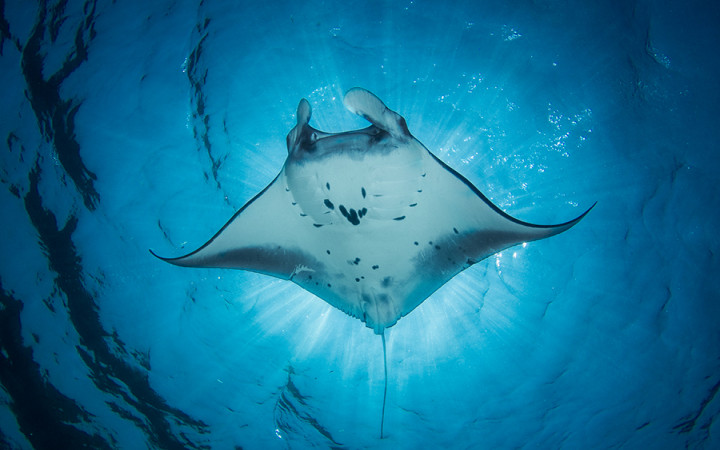Today’s Wonder of the Day was inspired by Jonathan. Jonathan Wonders, “Are manta rays endangered?” Thanks for WONDERing with us, Jonathan!
Have you ever dreamed of exploring the depths of the world's oceans? For true explorers, the sheer size of Earth probably seems incredibly daunting. How could one ever see all that Earth's surface has to offer?
When you consider that about 70% of Earth is covered by water, you realize that the unexplored depths of the world's seas are a vast frontier with untold mysteries to discover. Will you be the one to dive deep to discover what lies beneath the surface?
Imagine you're diving off the shoreline of a tropical island. As you swim past a coral reef, colorful fish dazzle your eyes. Suddenly, a shadow encases you in darkness. Looking up, you see an immense sea creature floating above you.
It's the sea creature you've been waiting to see: a huge manta ray. Also known as a giant devil ray or an Atlantic manta, the giant manta ray's scientific name is Manta birostris.
Flat and wider than they are long, manta rays have triangular pectoral fins that resemble wings. When outstretched, those wings can span over 20 feet across. Some people have even reported finding manta rays as large as 30 feet across.
Manta rays also have cephalic fins at the front of the head. They look somewhat like a devil's horns and are used to direct food, such as plankton and small fishes, into the manta ray's mouth.
You'll often find manta rays swimming near the surface in warm waters off the coast of islands or continents. As their giant fins gently flap and their short, whip-like tails swish back and forth, they appear to be flying through the water rather than swimming. Occasionally, manta rays will jump completely out of the water as a form of play or communication.
If you encounter a manta ray while diving, don't be surprised if it approaches you. They are not harmful to humans. In fact, they're curious creatures that seem to welcome interaction with humans.
This is perhaps because they are highly-intelligent creatures. Scientists have confirmed that manta rays have the largest brains of any fish, with enhanced abilities for learning, problem solving, and communicating. Some experts believe manta rays might also recognize themselves in mirrors, displaying self-awareness, a rare ability in the animal world.
Sadly, manta ray numbers around the world have been on the decline in recent decades. Experts point to the fact that fishermen in countries like Sri Lanka and India hunt manta rays for their gill rakers, which are made of cartilage that's extremely popular in Chinese medicine.




